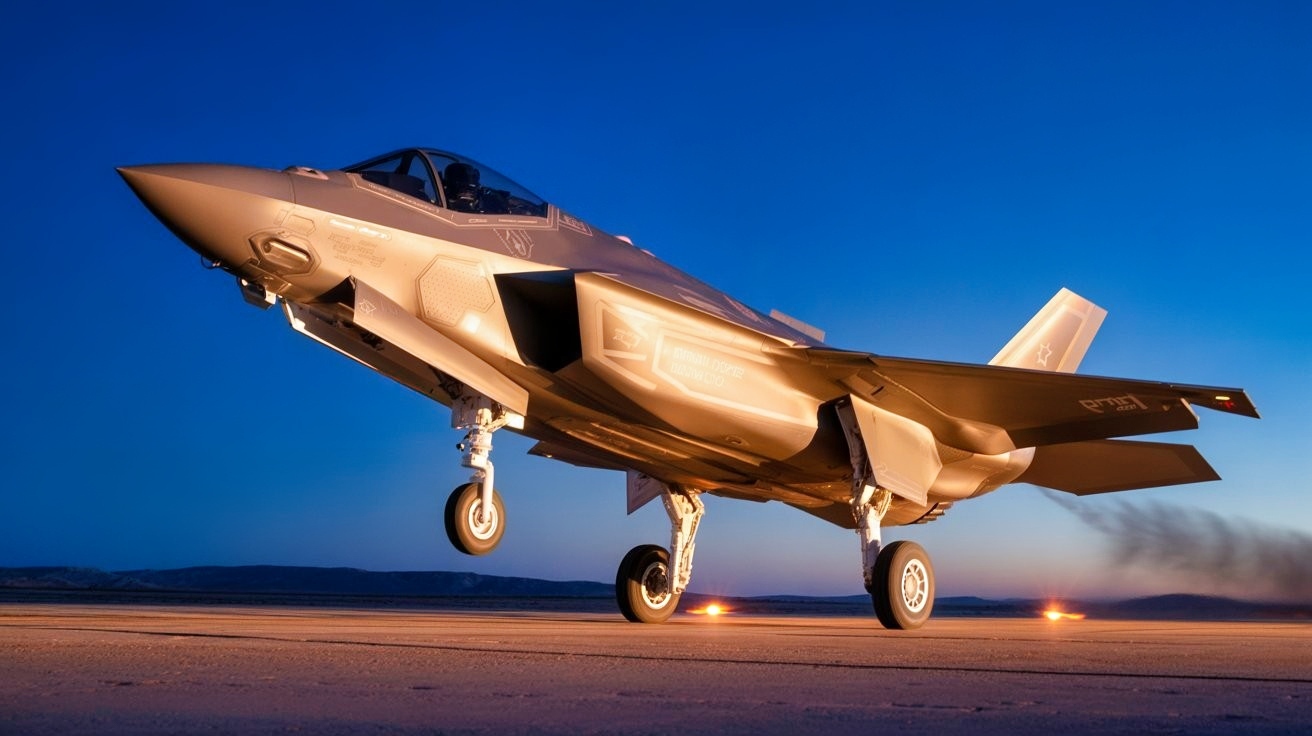The F-35I Adir Is Amazing: Israel was the first foreign operator of the Lockheed Martin F-35 Joint Strike Fighter, and in 2010, it signed a Letter of Agreement (LOA) to purchase the advanced aircraft.
On June 22, 2016, the IAF received the first F-35A Adir at a ceremony at the Fort Worth, Texas, F-35 factory. The Israeli Air Force declared its F-35 fleet operationally capable in December 2017, marking the completion of an intensive integration and training effort conducted at Nevatim Air Force Base (AFB), Israel. The Israeli Air Force gave the F-35 the Hebrew name Adir, meaning “Mighty One” in Hebrew.
Meet the F-35I Adir
The F-35 Joint Strike Fighter is the world’s most advanced fighter platform. Although the US Marine Corps, Air Force, and Navy fly the largest number of the highly exported Lightning II, these services were not the first to fly the aircraft in combat. In 2018, the modified Israeli F-35I Adir variant flew in an operation for the Israeli Air Force.
The F-35I Adir Is The Backbone Of Israel’s Defense
In 2010, Lockheed Martin modified an F-35 specifically for Israel’s defense. The Adir’s greatest feature arguably is its electronic warfare system (EWS). The platform incorporated domestically produced sensors and countermeasures in addition to helmet-mounted displays.
The Adir variants also have datalink functionality specifically suited to Israel’s needs and several extra enhancements to the jet’s data gathering and processing capabilities.
Israeli Air Force (IAF) pilots utilize a locally developed helmet-mounted display and bespoke datalink functionality specific to the IDF. At the same time, other enhancements further improved the F-35’s already potent data-gathering and processing capabilities. These various enhancements to the stealth aircraft have been significant enough to warrant the ‘I’ designation, making the F-35I one of just a handful of formally acknowledged F-35 variants.
The F-35I helps Israel maintain its regional aerial dominance, a critical factor given its geopolitical environment. It provides the Israeli Air Force (IAF) with cutting-edge technology, enhancing its operational capabilities.
The F-35I’s stealth capabilities allow it to penetrate enemy air defenses undetected and conduct missions that would be difficult for other aircraft.
The Adir’s advanced sensors and electronic warfare systems provide better situational awareness and help defend against various threats. It can engage in multiple missions, including air-to-air combat, ground attack, intelligence gathering, and electronic warfare.
The F-35I’s Proven Combat Record:
Israel’s F-35I, with its specialized modifications, is particularly effective against threats from regional adversaries like Iran and its proxies. It has been involved in raids on targets in Gaza and Lebanon and has also taken part in long-range strikes against Iranian-backed Houthi terrorists in Yemen and Iran.
Israel has shown the excellence of the F-35I in combat. The Adir has been used to intercept missiles, shoot down drones, and conduct strikes against Iranian targets, highlighting its capabilities.
In late October, the Israelis responded to the massive ballistic missile attack on Israel by Iran by launching a devastating attack on Iran. The airstrike destroyed Iranian air defenses, missile-building factories, and a nuclear research facility.
“Israel used more than 100 aircraft, carrying fewer than 100 munitions, and with no aircraft getting within 100 miles of the target in the first wave, and that took down nearly the entirety of Iran’s air-defense system,” Adm. Tony Radakin, the UK’s chief of defense staff, said during a Royal United Services Institute lecture in London.
“It has destroyed Iran’s ability to produce ballistic missiles for a year and left Tehran with a strategic dilemma in how it responds. That is the power of fifth-generation aircraft, combined with exquisite targeting and extraordinary intelligence,” Radakin said. “And that was all delivered from a single sortie.”
However, a contradictory report from Bulgarianmilitary.com claims that Iran was able to successfully “jam” and “target” IDF F-35s, a report quite challenging to verify. Which report is correct? Perhaps a bunch of smoking S-300s and S-400s in the Iranian desert would support the preceding report.
Today, more than 1,200 F-35 aircraft are operational around the world. Nearly half of those are in service with our allies. And Israel’s attack on Iran last fall will just help sell the aircraft to even more allied customers.
The F-35I’s advanced capabilities are a powerful deterrent to potential adversaries, signaling Israel’s commitment to defending itself. They also enhance Israel’s power projection capabilities, allowing it to respond decisively to any aggression.
The F-35I’s ability to conduct precision strikes and penetrate enemy defenses undetected is crucial for maintaining Israel’s strong defense posture.
About the Author:
Steve Balestrieri is a 19FortyFive National Security Columnist. He served as a US Army Special Forces NCO and Warrant Officer. In addition to writing for 19FortyFive, he covers the NFL for PatsFans.com and is a member of the Pro Football Writers of America (PFWA). His work was regularly featured in many military publications.

